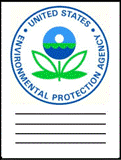United States Environmental Protection Agency

United States Environmental Protection Agency: Publications
Document Type
Article
Date of this Version
2013
Citation
Ecological Modelling 263 (2013) 196– 210; http://dx.doi.org/10.1016/j.ecolmodel.2013.04.023
Abstract
Described in this article is development and validation of a process based model for carbon cycling in flooded wetlands, called WetQual-C. The model considers various biogeochemical interactions affecting C cycling, greenhouse gas emissions, organic carbon export and retention. WetQual-C couples carbon cycling with other interrelated geochemical cycles in wetlands, i.e. nitrogen and oxygen; and fully reflects the dynamics of the thin oxidized zone at the soil-water interface. Using field collected data from a small wetland receiving runoff from an agricultural watershed on the eastern shore of Chesapeake Bay, we assessed model performance and carried out a thorough sensitivity and uncertainty analysis to evaluate the credibility of the model. Overall, model performed well in capturing TOC export fluctuations and dynamics from the study wetland. Model results revealed that over a period of 2 years, the wetland removed or retained equivalent to 47 ± 12% of the OC carbon intake, mostly via OC decomposition and DOC diffusion to sediment. The study wetland appeared as a carbon sink rather than source and proved its purpose as a relatively effective and low cost mean for improving water quality.

